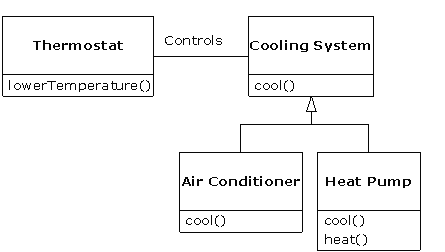Is-a vs. is-like-a relationships
There’s a certain debate that can occur about inheritance: Should inheritance override only base-class methods (and not add new methods that aren’t in the base class)? This would mean that the derived type is exactly the same type as the base class since it has exactly the same interface. As a result, you can exactly substitute an object of the derived class for an object of the base class. This can be thought of as pure substitution, and it’s often referred to as the substitution principle. In a sense, this is the ideal way to treat inheritance. We often refer to the relationship between the base class and derived classes in this case as an is-a relationship, because you can say “a circle is a shape.” A test for inheritance is to determine whether you can state the is-a relationship about the classes and have it make sense.
There are times when you must add new interface elements to a derived type, thus extending the interface and creating a new type. The new type can still be substituted for the base type, but the substitution isn’t perfect because your new methods are not accessible from the base type. This can be described as an is-like-a relationship (my term). The new type has the interface of the old type but it also contains other methods, so you can’t really say it’s exactly the same. For example, consider an air conditioner. Suppose your house is wired with all the controls for cooling; that is, it has an interface that allows you to control cooling. Imagine that the air conditioner breaks down and you replace it with a heat pump, which can both heat and cool. The heat pump is-like-an air conditioner, but it can do more. Because the control system of your house is designed only to control cooling, it is restricted to communication with the cooling part of the new object. The interface of the new object has been extended, and the existing system doesn’t know about anything except the original interface.

Of course, once you see this design it becomes clear that the base class “cooling system” is not general enough, and should be renamed to “temperature control system” so that it can also include heating—at which point the substitution principle will work. However, this diagram is an example of what can happen with design in the real world.
When you see the substitution principle it’s easy to feel like this approach (pure substitution) is the only way to do things, and in fact it is nice if your design works out that way. But you’ll find that there are times when it’s equally clear that you must add new methods to the interface of a derived class. With inspection both cases should be reasonably obvious.
